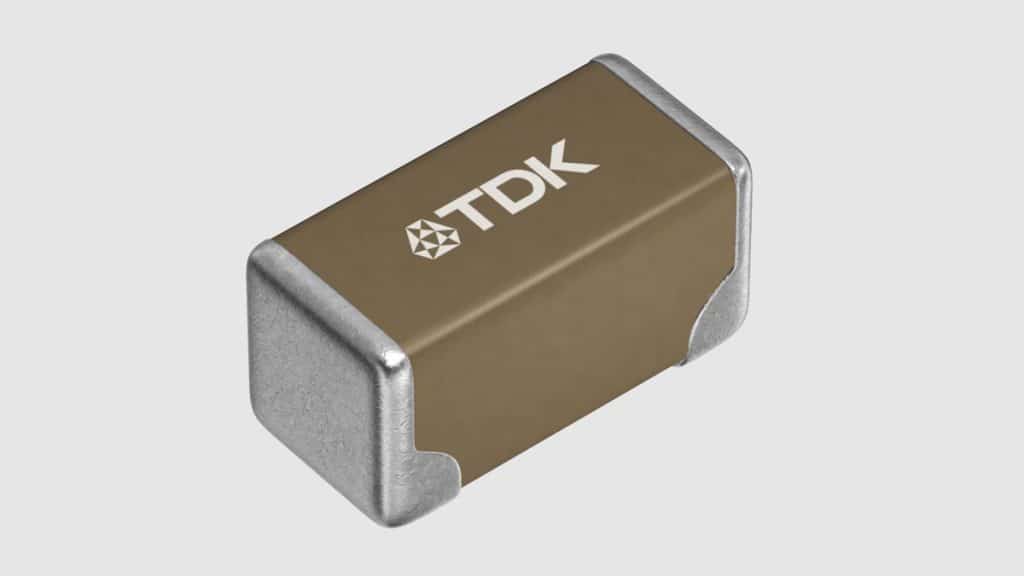TDK Corporation has expanded its CN series of multilayer ceramic capacitors (MLCCs) with a unique soft termination MLCC types design and structure that achieve both high reliability and low resistance.
Unlike conventional soft termination MLCCs with the entire terminal electrodes covered with resin layers, the new design features resin layers covering only a board mounting side, allowing electric current to pass outside the layers, reducing electrical resistance and ESR.
The soft termination product with this structure is the first in the industry.* Adding CNA series (automotive grade) and CNC series (commercial grade) products addresses market needs for large-value capacitances.
* As of September 2023, according to TDK
The new MLCCs feature up to 22 uF in 3216 size (3.2 × 1.6 × 1.6 mm – L x W x T) and 47 uF in 3225 size (3.2 × 2.5 × 2.5 mm – L x W x T) with low-resistance soft termination, translating to higher capacitances than conventional products and thereby helping reduce the number of parts and size.
MLCCs with soft termination prevent short circuits in power and battery lines. However, since soft termination has a slightly higher terminal electrode resistance, it is necessary to keep the resistance low to reduce loss.
The automotive grade CNA series are AEC-Q200 compliant. Mass production will commence in September 2023. These products are an addition to the CN series originally released in September of 2021 due to the continuing need for higher capacitance.
Features
- High reliability, compliant with AEC-Q200
- Higher capacitances of 22 uF in 3216 size and 47 uF in 3225 size enable space-saving designs and a reduction in the number of components
- TDK’s unique terminal structure realizes soft termination that has a low resistance equivalent to that of standard products
Applications
- Smoothing and decoupling of the power lines for various kinds of electronic control units (ECU) for automobiles
- Smoothing and decoupling of the power lines for industrial robots, etc.
